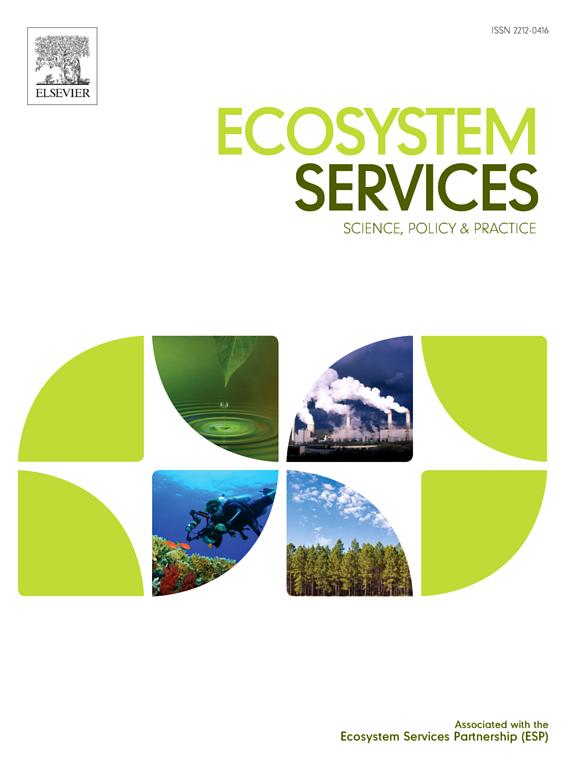Using geo-data and social media images to explore the supply and demand of cultural ecosystem services for terraces in China
IF 6.6
2区 环境科学与生态学
Q1 ECOLOGY
引用次数: 0
Abstract
Terraces are a unique type of agro-ecosystem that are vital for regional food security, biodiversity, and the provision of cultural ecosystem services (CES) to society. This study introduces a novel approach to map the supply–demand balance of terrace CES (TCES) in China by integrating geo-data and social media images. Firstly, a TCES supply assessment framework is developed, comprising scenic attractiveness and heritage attractiveness, to assess TCES supply. Secondly, based on 55,616 geotagged Weibo images, the EfficientNet model classifies images into seven categories, with a questionnaire linking these to four CES types: aesthetic services, heritage & cultural services, recreation & tourism services, and spiritual & emotional services. Population data is also used to assess TCES demand. Finally, the supply–demand ratio and bivariate Moran’s I examine the balance and spatial autocorrelation of TCES. The results show: 1) High supply areas are mainly in southern China, while demand is more scattered in several hotspots; 2) There is a significant positive spatial autocorrelation between supply and demand, where higher supply promotes greater demand. High CES supply and demand cluster in Zhejiang-Fujian Hills and Yunnan-Guizhou Plateau, with imbalances occurring in metropolitan areas or mountainous areas along provincial boundaries. These findings and methodologies provide valuable insights for the planning and management of terraces in China, as well as for future CES-related studies.
利用地理数据和社交媒体图像探索中国梯田文化生态系统服务的供需关系
梯田是一种独特的农业生态系统,对区域粮食安全、生物多样性和向社会提供文化生态系统服务(CES)至关重要。本研究提出了一种整合地理数据和社交媒体图像来绘制中国梯田消费空间供需平衡的新方法。首先,构建由景区吸引力和遗产吸引力组成的TCES供应评估框架,对TCES供应进行评估。其次,基于55,616张带有地理标签的微博图片,effentnet模型将图片分为七类,并通过问卷将这些图片与四种CES类型联系起来:美学服务、遗产与文化服务、娱乐与旅游服务和精神与情感服务。人口数据也用于评估TCES的需求。最后,利用供需比和双变量Moran’s分析了TCES的平衡性和空间自相关性。结果表明:1)供给高的地区主要集中在南方,需求较分散在几个热点地区;②供给与需求之间存在显著的空间自相关关系,供给越大,需求越大。消费电子产品的高供给和高需求集中在浙闽丘陵和云贵高原,失衡主要发生在省会地区或省际山区。这些发现和方法为中国梯田的规划和管理以及未来的ces相关研究提供了有价值的见解。
本文章由计算机程序翻译,如有差异,请以英文原文为准。
求助全文
约1分钟内获得全文
求助全文
来源期刊

Ecosystem Services
ECOLOGYENVIRONMENTAL SCIENCES&-ENVIRONMENTAL SCIENCES
CiteScore
14.90
自引率
7.90%
发文量
109
期刊介绍:
Ecosystem Services is an international, interdisciplinary journal that is associated with the Ecosystem Services Partnership (ESP). The journal is dedicated to exploring the science, policy, and practice related to ecosystem services, which are the various ways in which ecosystems contribute to human well-being, both directly and indirectly.
Ecosystem Services contributes to the broader goal of ensuring that the benefits of ecosystems are recognized, valued, and sustainably managed for the well-being of current and future generations. The journal serves as a platform for scholars, practitioners, policymakers, and other stakeholders to share their findings and insights, fostering collaboration and innovation in the field of ecosystem services.
 求助内容:
求助内容: 应助结果提醒方式:
应助结果提醒方式:


